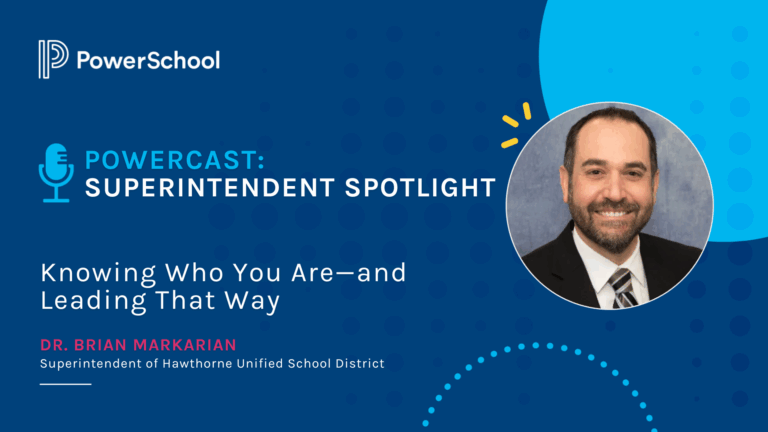There are thousands of great business and leadership-minded books out there, but If you are feeling stuck in your relationship with time management, people management, motivation, creativity, or goal-setting, read or re-read one of these excellent publications. All are available on Amazon or your local bookstore.
How to Win Friends and Influence People
by Dale Carnegie
One of Amazon’s best selling books, with over 15 million copies sold since its initial publication in 1936, Carnegie’s tips and advice appeal to people of all jobs and abilities, but leaders can gain an especially significant understanding of how they can better appeal to others, encourage change, and be more likeable.
Improving Your Leadership Intelligence: A Field Book for K-12 Leaders
by Wanda S. Maulding Green and Ed Leonard
Published in 2017, this book discusses emotional intelligence, the soft skills of leadership, feedback, adaptive capacity, and other best practices, providing many “situational judgment tests” to guide the reader through analyzing real-life scenarios and discovering better ways to handle them.
The Lost Tools of Learning
by Dorothy Sayers
While not a leadership book, this classic is perfect for educators. It provides thoughtful knowledge on the groundwork and fundamentals of education pre-1950 and as far back as the Middle Ages. Sayers advocates for teaching students how to problem-solve using logic, rhetoric, and language. “Is not the great defect of our education today,” writes Sayers, “that although we often succeed in teaching our pupils ‘subjects,’ we fail lamentably on the whole in teaching them how to think: they learn everything, except the art of learning.”
What Great Principals Do Differently
By Todd Whitaker
A book by a prolific author on how to be an effective leader in education while “developing an accurate sense of self, understanding the dynamics of change, and dealing with negative or ineffective staff members.” – Amazon
The Principal’s Survival Guide
This book is a hands-on, practical school leadership guide for new and veteran principals and administrators. Unlike other more theoretical or argumentative texts, this “Survival Guide” lists dozens of real-life scenarios and tells you how to communicate your way through them.
The 5 Languages of Appreciation in the Workplace: Empowering Organizations by Encouraging People
by Gary Chapman and Paul White
A good followup to Dale Carnegie’s “How to Win Friends,” this bestseller (based on the #1 New York Times bestseller The 5 Love Languages) will take you further on the topic of dealing with people, studying human behavior, avoiding misunderstandings, and making employees and stakeholders feel appreciated. The book also includes a free access code for taking the online Motivating By Appreciation Inventory, which assesses your “languages of appreciation.”
Good Strategy Bad Strategy: The Difference and Why It Matters
Good strategy is rare. It is more than planning budgets and setting goals. Rumelt discusses the best logical tactics and three components of a good strategy as well as and common setbacks of strategic planning, including what it means to have a bad strategy, helping you cut out everything that is unnecessary in your vision. This book is inspirational in a concrete way.
The Hard Thing About Hard Things: Building a Business When There Are No Easy Answers
by Ben Horowitz (Author)
Ben Horowitz is the cofounder and general partner of Andreessen Horowitz, a venture capital firm that has invested in Airbnb, GitHub, Facebook, Pinterest, and Twitter. His blog is read by millions of people. In this book, Horowitz discusses his own past, telling stories of taking risks, leading staff as a CEO, and dealing with competitors, instead of merely offering direct impersonal advice.
Why Simple Wins: Escape the Complexity Trap and Get to Work That Matters
by Lisa Bodell
If you want to find more time for high-value, productive work, founder and CEO of futurethink Lisa Bodell teaches readers about the power of simplification – how to reduce unnecessary “busy work,” restructure your work day, and improve communication, engagement, feedback, and productivity.
Traction; Get a Grip on your Business
by Gino Wickman
Another time-saver, this book was written to help maximize your efficiency and lead your team within the parameters of a business model built to withstand any weather. Author Gino Wickman is the founder of EOS Worldwide, a leadership team development company for small business owners, entrepreneurs, and other leaders.
Getting to Yes: Negotiating Agreement Without Giving In and Getting Past No: Negotiating in Difficult Situations
by Roger Fisher, William L. Ury, Bruce Patton / by William Ury
This widely-read and studied book focuses less on manipulation and more on finding better, more creative ways to reach amicable and trusting agreements that can lead to positive long-term and respectful relationships.
Eat That Frog!: 21 Great Ways to Stop Procrastinating and Get More Done in Less Time
by Brian Tracy
There are never enough hours in the day, it’s hard to prioritize your many responsibilities, and there is always one task that you seem to be putting off until tomorrow. This is your “frog,” and Tracy’s goal is to help you overcome (eat) it. A quick read about time management, this book empowers you to overcome procrastination and cut out time-wasting, meaningless moments from your day.
Big Magic: Creative Living Beyond Fear
The power of creative living is not exclusive to artists and musicians. This bestseller by the author of Eat, Pray, Love has the power to change your life beyond your career, as you give yourself permission to break the rules and find more creative, inspired solutions at any age and with any discipline.
Declutter Your Mind: How to Stop Worrying, Relieve Anxiety, and Eliminate Negative Thinking
by S.J. Scott and Barrie Davenport
This is another book that will reach far beyond your professional life. Like the Mari Kondo technique of the mind, Scott’s and Davenport’s tips help you stay organized at home, generate new ideas, beat your addiction to technology, find better work-life balance, live more simply, and stop procrastinating. The authors share their past stories and best practices for sweeping out mental clutter.
Influence: The Psychology of Persuasion
This New York Times Bestseller will give you tips not only on techniques and methods to persuade others to see things from your point of view, but also demonstrates how salespeople do their best to manipulate your decisions as well. Cialdini studied how people view and are influenced by social obligations, financial commitments, interpersonal debts, decisions made by authority figures, other people’s actions, complements, and more.
Flow: The Psychology of Optimal Experience
You might have watched Csikszentmihalyi’s TED Talk on flow. Flow is the state of work in which you are at ease, productive, and happy with what you are doing. For example, you might look up and realize that hours have passed, and you have finished work or made decisions that you are proud of. This book will help you achieve meaningful, more present leadership as well as more happiness while avoiding or delegating anti-flow tasks.
The Art of Woo
by G. Richard Shell and Mario Moussa
If you want to be more in command of a situation and change the minds of skeptical, doubtful people around you, this thoughtful book offers five persuasion styles modeled after different business leaders. Best of all, it is a good read for those who might be conflict-averse or want to improve their own emotional intelligence.
Thinking, Fast and Slow
by Daniel Kahneman
Rewrite the way you think and minimize the number of bad decisions you could make – for life. If other books discuss emotional intelligence, this one teaches rational intelligence and behavioral economics.
School Leadership that Works: From Research to Results
By Robert J. Marzano, Timothy Waters, and Brian A. Mcnulty
An easy to study research-based book that blends practical and scientific advice for novice and expert school leaders who want to take charge, make change, and raise the achievement level of their students.
Feel-Bad Education And Other Contrarian Essays on Children and Schooling
by Alfie Kohn (Author)
Kohn is another prolific writer on education topics. His books are great to read even if you might disagree with his points. In “Feel-Bad Education,” he argues that modern education is too focused on standardized tests and the robotic memorization of facts, leaving kids with a negative view of learning.
What Connected Educators Do Differently
by Todd Whitaker, Jeffrey Zoul, and Jimmy Casas
A 21st century read about how utilizing technology in classrooms and connecting with peers on social media help both new and veteran educators make a difference. The book is laid out in “Follow 5, Find 5, Take 5″ actionable steps to learn as you go.
If You Don’t Feed the Teachers They Eat the Students! – Guide to Success for Administrators and Teachers
by Neila A. Connors and Jennifer Streams
Though this book was published in 2000, it is still a fun read for educators and administrators, full of simple words of wisdom to improve school climate and interpersonal relationships within your school or district.
Teach Like a Pirate
By Dave Burgess
Author Dave Burgess is a New York Times Best-Selling author who tries to motivate and inspire teachers, helping them develop a bigger personality, as well as practical ways to become more creative and engaging in the classroom, especially to reach at-risk students.
Being a Successful Principal: Riding the Wave of Change Without Drowning
by David R. Schumaker and William A. Sommers
If you are a principal, it can be enlightening to read the blogs and books of other principals around the state and nation to gain insight on how they problem-solve. Schumaker and Sommers’ book is written by and for principals. It is a collection of insights, anecdotes, and guidance on shared leadership in schools, including tips on teaching strategies, assessments, thinking skills and more.
The Art of Coaching: Effective Strategies for School Transformation
Number 1 in Amazon’s Education Administration booklist, Aguilar’s publication is a great overview on techniques and theory of coaching and the ways in which principals, administrators, and district leaders can adopt these strategies to help others solve problems and address equity issues in schools.
UnCommon Learning: Creating Schools That Work for Kids
“Uncommon Learning” is all about how to plan for the next generation. Sheninger lists effective ways, backed by data and anecdotes, to use technology to improve student performance and make students more excited about coming to school.
The Principal: Three Keys to Maximizing Impact
A popular author on education leadership topics, Fullan advocates for neither “micro-managing instruction nor autonomous entrepreneurialism” (Amazon). He discusses the major roles of administrators and what they should be, helps you develop your goals and strategic plan, provides real-life actionable tasks, and includes strategies for principals that have been field-tested in schools across the U.S. and Canada.
Empower: What Happens When Students Own Their Learning
by John Spencer and A.J. Juliani
With some U.S. schools making serious cuts to the arts or urging students to not see art as a “serious” career choice, books like “Empower” and John Spencer’s other publication, “Launch: Using Design Thinking to Boost Creativity and Bring Out the Maker in Every Student” can help you get students making, designing, and creating their own learning path in (and out of) the classroom. In a world of budget cuts and standardized tests, administrators should enable students to access artistic outlets where they can represent their free speech, individuality, and dreams.




























